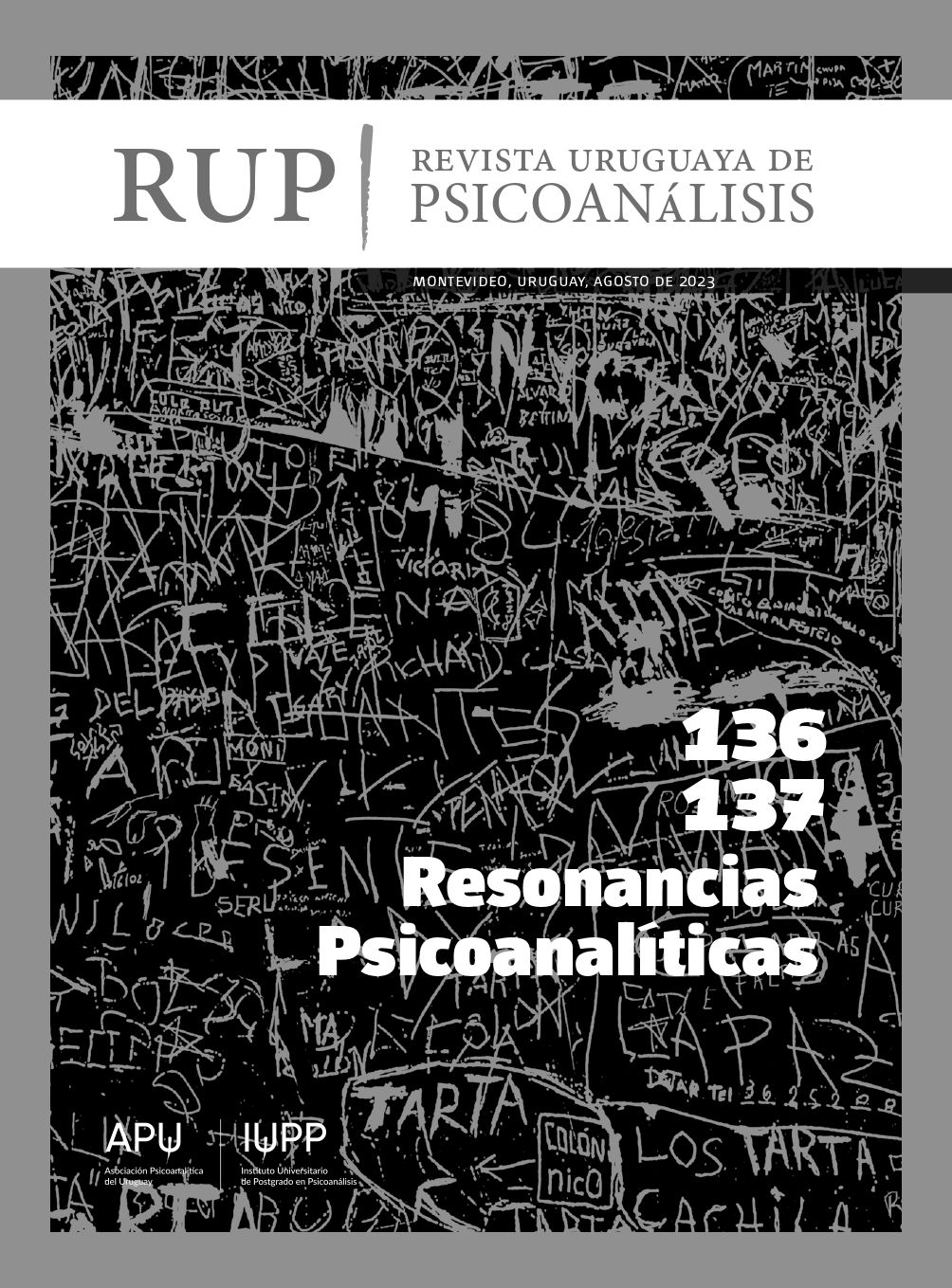An irreverent comment. Traces and beginnings of a psychoanalytic talk in Uruguay
DOI:
https://doi.org/10.36496/n136-137.a6Keywords:
Parricide, Psychiatry, Psychoanalysis, History of psychoanalysisAbstract
On December 12, 1935, Iris Cabezudo, a «young student teacher», murdered her father Lumen with several bullets. The news was
published by multiple newspapers of the time, thus gaining great public relevance. A year later, the forensic medical report by psychiatrist Camilo Payssé was published. There appeared a milestone that we can consider initiatory and fundamental: the psychiatrist Valentín Pérez Pastorini made a commentary making a novel reference to Psychoanalysis. The commentary, made from a position of irreverence, makes intelligible a distance with the Psychiatry discourse of the time. He discusses the fragmentary use of psychoanalytic theories, highlighting the importance of method in order to reach psychoanalytic conclusions. A certain eclecticism characteristic of psychiatry at the beginning of the twentieth century was left behind. Psychoanalysis could no longer be talked about in the same way.
Downloads
References
Alexander, F. y Staub, H. (1961). El delincuente y sus jueces desde el punto de vista psicoanalítico. Biblioteca Nueva. (Trabajo original publicado en 1928).
Capurro, R. y Nin, D. (2018). Extraviada. Una piraña.
Donya, G. y Florio, M. (2019). Entre «magos, persas y poetas»: La biblioteca psicoanalítica del Dr. Valentín Pérez Pastorini. Revista Uruguaya de Psicoanálisis, 129, 165-189.
Dunker, C. y Zanetti, C. (2017). Construção e formalização de casos clínicos. En C. Dunker, H. Ramirez y T. Assadi (org.), A construção de casos clínicos em psicanálise (pp. 23-45). Annablume.
Etchepare, B. (1913). Ceguera histérica. Revista Médica del Uruguay, 113-119.
Fink, E. (2000). La filosofía de Nietzsche. Alianza.
Foucault, M. (1969). Qu’est-ce qu’un auteur? Bulletin de la Société Française de Philosophie, 3, 73-104.
Freud, S. (2012a). Dos artículos de enciclopedia: «Psicoanálisis» y «Teoría de la libido». En J. L. Etcheverry (trad.), Obras completas (vol. 18, pp.227-254). Amorrortu. (Trabajo original publicado en 1923 [1922]).
Freud, S. (2012b). La herencia y la etiología de las neurosis. En J. L. Etcheverry (trad.), Obras completas (vol. 3, pp. 139-156). Amorrortu.
(Trabajo original publicado en 1896).
Freud, S. (2012c). Presentación autobiográfica. En J. L. Etcheverry (trad.), Obras completas (vol. 20, pp. 71-164). Amorrortu. (Trabajo original publicado en 1925 [1924]).
Freud, S. (2012d). ¿Pueden los legos ejercer el análisis? Diálogos con un juez imparcial En J. L. Etcheverry (trad.), Obras completas (vol. 20, pp.165-244). Amorrortu. (Trabajo original publicado en 1926).
García Austt, E. (1937). Delitos pasionales, delitos delirantes. Revista de Psiquiatría del Uruguay, 11, 3-47.
Herrera, A. (2013). Epistemología del psicoanálisis. Palibrio.
Marinelli, L. y Mayer, A. (2011). Soñar con Freud. Teoría y ensayo.
Milán, G. y García. F. (2019). Un caso de mutismo (1925): Cura, palabra, poder. Revista Uruguaya de Psicoanálisis, 129, 139-164.
Nietzsche, F. (s. f.). El nacimiento de la tragedia. La Cueva. https://web.seducoahuila.gob.mx/biblioweb/upload/Nietzsche%20Friedrich%20
-%20El%20nacimiento.pdf (Trabajo original publicado en 1872).
Payssé, C. (1936). Psicogénesis de un parricidio. Revista de Psiquiatría del Uruguay, 4, 35-70.
Sección de anexos (1936). Revista de Psiquiatría del Uruguay.
Downloads
Published
Issue
Section
License
Copyright (c) 2023 Revista Uruguaya de Psicoanálisis

This work is licensed under a Creative Commons Attribution 4.0 International License.









 This work is licensed under a
This work is licensed under a 